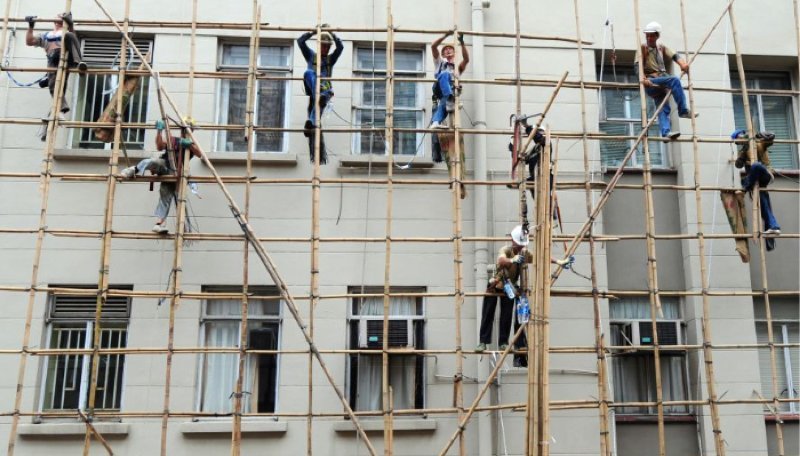Nov . 10, 2024 00:05 Back to list
Exporters of Roof Slab Shuttering Solutions for Construction Industry Needs
The Market for Roof Slab Shuttering Exporters
In the construction industry, roof slab shuttering plays a critical role in ensuring the structural integrity and safety of buildings. Shuttering refers to the temporary mold into which concrete is poured to form the desired shape of slabs, beams, and columns. Among the various types of shuttering materials and systems, roof slab shuttering stands out due to its specific requirement for supporting the weight of wet concrete and providing a flat, uniform surface.
Importance of Roof Slab Shuttering
Roof slab shuttering is essential for any construction project that involves concrete slabs, particularly in multi-storey buildings. It provides the necessary support during the curing process, ensuring that the finished slabs achieve the desired strength and durability. High-quality shuttering systems prevent issues such as deformation or cracking, which can undermine the stability and longevity of structures. Additionally, good shuttering solutions can lead to significant time and cost savings during construction by optimizing labor efficiency and reducing wastage of materials.
Types of Roof Slab Shuttering
There are various types of roof slab shuttering systems available in the market, each designed for specific applications and construction methods. The most common types include
1. Plywood Shuttering Made of high-quality plywood, this type is popular for its smooth surface finish and lightweight properties, making it easy to handle and assemble. 2. Steel Formwork Durable and reusable, steel formwork is suitable for large-scale projects. It offers excellent dimensional accuracy and is resistant to weather-related wear and tear. 3. Aluminium Formwork Known for its lightweight and high strength, aluminium formwork is easy to transport and set up. It is ideal for projects with repetitive designs. 4. Plastic Formwork Lightweight and easy to install, plastic formwork systems are increasingly being used for small-scale projects. They offer versatility and are resistant to moisture.
The Role of Exporters
As the demand for construction materials grows globally, roof slab shuttering exporters play a crucial role in facilitating international trade
. These exporters source high-quality shuttering solutions from manufacturers and distribute them to various countries, ensuring that construction companies have access to the latest technologies and materials.roof slab shuttering exporters

Key Functions of Roof Slab Shuttering Exporters
1. Market Research Exporters conduct in-depth market analysis to identify trends and demand for various types of shuttering solutions. This research helps them understand which products are in high demand in different regions. 2. Quality Assurance A major responsibility of exporters is to guarantee the quality of the products they supply. They work closely with manufacturers to ensure compliance with international standards and certifications.
3. Logistics and Distribution Managing the logistics of transporting shuttering materials can be complex. Exporters are responsible for the efficient distribution of products, navigating customs regulations, and ensuring timely delivery to their clients.
4. Customer Support Exporters provide valuable support to construction companies by offering guidance on the selection and proper use of roof slab shuttering solutions. They may also provide training sessions to ensure that end-users understand how to maximize the performance of the shuttering systems.
Market Trends and Opportunities
The global construction industry is witnessing significant growth, driven by urbanization, population growth, and infrastructure development. As a result, the demand for roof slab shuttering systems is on the rise. Key regions such as Asia-Pacific, North America, and Europe are experiencing rapid expansion in construction activities, creating opportunities for exporters to penetrate new markets.
One of the most promising trends in the industry is the increasing focus on sustainability and eco-friendly construction practices. Exporters that offer innovative, sustainable shuttering solutions made from recyclable or biodegradable materials are likely to gain a competitive advantage.
Conclusion
In summary, roof slab shuttering is a crucial component in the construction industry, ensuring the stability and safety of concrete structures. The role of roof slab shuttering exporters becomes increasingly important as the global demand for construction materials continues to rise. By staying attuned to market trends, ensuring quality standards, and providing exceptional customer support, these exporters can effectively meet the needs of construction companies worldwide and contribute to the growth of the industry.
-
High-Quality U Head Jack Scaffolding – Reliable Scaffolding Jack Head Manufacturer & Factory
NewsJul.08,2025
-
High-Quality I Beam H20 Leading Timber Beam H20 Material Factory, Exporters & Manufacturers
NewsJul.08,2025
-
High-Quality Powder Coating Steel Formwork - Durable & Corrosion Resistant Solutions
NewsJul.07,2025
-
Inclined Column Formwork Supplier – Durable & Precise Solutions for Unique Structures
NewsJul.07,2025
-
High-Quality Water Stop Solutions Trusted Water Stop Company & Suppliers
NewsJul.07,2025
-
High-Quality Formwork Material Supplier Reliable Manufacturer & Factory Solutions
NewsJul.06,2025